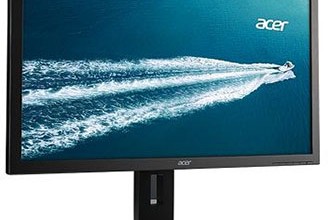Will “Smart Sensors” Replace TV Remotes?
 One big focus for TVs at CES this year was a plethora of alternatives to the remote control. Options ranged from voice to smartphone App connectivity to control solutions, but perhaps the most intriguing for its simplicity and ease of operation is the use of hand gestures to replace the IR remote control. As mentioned in yesterday’s DD by Pete Putman, Samsung was there with a CES Press Day announcement supporting hand gesture technology on several of its high-end, Smart TV models. The company said they will begin shipping high-end TVs (8000 & 6000 series), which include an on-board camera mounted top center of the set, that not only captures images for Skype video phone calls, but also translates gestures into commands that can replace the standard functions of the remote.
One big focus for TVs at CES this year was a plethora of alternatives to the remote control. Options ranged from voice to smartphone App connectivity to control solutions, but perhaps the most intriguing for its simplicity and ease of operation is the use of hand gestures to replace the IR remote control. As mentioned in yesterday’s DD by Pete Putman, Samsung was there with a CES Press Day announcement supporting hand gesture technology on several of its high-end, Smart TV models. The company said they will begin shipping high-end TVs (8000 & 6000 series), which include an on-board camera mounted top center of the set, that not only captures images for Skype video phone calls, but also translates gestures into commands that can replace the standard functions of the remote.
To make its point, Samsung had a demo showing the technology in operation at CES and we had a chance to try out the technology first-hand (pun intended). The Samsung device goes beyond a Kinect-like gesture control, by adding voice and even face recognition to the intelligence of the ever smarter Smart TV. For the Samsung gesture demo room, the company set up two large glass enclosed areas.
Our first impression was that the technology worked rather well, with voice and face recognition quite impressive for a first gen demo. To turn the system on, one simply speaks “Hello TV” to prevent any unintended gestures making TV set changes. Voice commands like channel up/down and volume up/down worked fairly well, but did require a strong and fairly loud voice. Others in the room were able to use these voice commands also.
Face recognition was even more robust, but does require the user to be in front of the TV. When a second user moved to this recognition zone, the profile set up for that specific user was recognized (based on face), and displayed top-level content preferences.
What we did notice is the gesture recognition UI needs some. Specifically the screen UI text and icons were rather small, requiring balloons that highlighted tightly packed line items perhaps in an effort to improve visibility and accuracy. As the user waved the hand to control the cursor on-screen, the balloons would appear then disappear, like doing a mouse roll-over on a hypertext link.
This part of the demo even took the trained user a couple of tries to select the specific on-screen function, even after giving demonstrations all day long. Overall the gesture on-screen navigation experience felt a bit forced, as if Samsung engineers migrating a more highly accurate pointing device over to the gesture UI, rather than developing the system from the ground up (note, this is pure speculation on my part.)
Contrast this experience with the Prime Sense demo going on in the South Hall of the CES show where the company confirmed that LG was a licensee and showing its version of a Kinect-like accessory running gesture in their booth. The Prime Sense UI employed a rather innovative highlighting system for gesture control (along with much larger on-screen targets) that made the experience almost game-like and fun. The UI used bright white marker-like highlights on screen, to indicate what was selected. It was rather compelling. The LG system uses a multi-camera approach that is based on creating a 3D image that may prove to be more robust, responsive but perhaps more expensive.
Samsung may have developed the 2D camera based gesture technology itself, or perhaps licensed it from Herzila, Israel based XTR3D (short for Extreme Reality) that sells a single camera solution optimized for a host of devices including TVs, mobile, laptop and gaming. On their web site the company said its technology includes real-time software that uses “…full body 3D motion capture technology,” from a single standard webcam. The motion capture engine “extracts the 3D position” of the user in front of the camera, using every frame, then creates a live 3D model of the user in real time, which is analyzed with gestures extracted, using “appropriate tolerances according to skeleton positioning and/or trajectories,” the group said.
Specific to the TV solution, XTR for TV requires a web cam and software, offering OEMs a minimal footprint and memory consumption, with seamless integration to augment the existing remote control, working up to 5 meters away. It also helps that the solution is OS agnostic adapting to any platform, according to the company.
We think gesture control, along with voice and face recognition is the “wave” of the future of TV, plus many other devices. Besides being intuitive and convenient, it also has the potential to solve the lost remote problem-and which remote to use. Like so many other areas in TV innovation, what  was shown at CES this year was not totally new. We’ve been looking at gesture and voice based TV prototypes since 2008 from Hitachi and Toshiba at CEATEC Japan, and perhaps even before that. But the big difference this time, LG and Samsung TVs are set to move out of the lab and ship to consumers this year. We have no doubt that the Samsung experience will improve to parity LG. So now we can finally say, “Goodbye, remote” and “Hello, TV.”
was shown at CES this year was not totally new. We’ve been looking at gesture and voice based TV prototypes since 2008 from Hitachi and Toshiba at CEATEC Japan, and perhaps even before that. But the big difference this time, LG and Samsung TVs are set to move out of the lab and ship to consumers this year. We have no doubt that the Samsung experience will improve to parity LG. So now we can finally say, “Goodbye, remote” and “Hello, TV.”
Steve Sechrist is a senior analyst and editor for Insight Media. Reach him at steve@insightmedia.info





